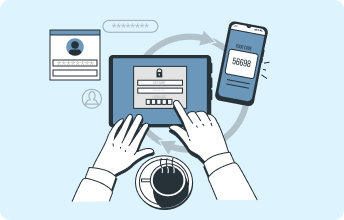How to Spot and Avoid Fake Websites
- Lyzha

- Apr 14
- 2 min read
The internet has significantly transformed the way we connect, shop, and live. However, it also made it easier for cybercriminals to take advantage of our trust. There are many fake websites that imitate trustworthy and well-known platforms. These websites are becoming increasingly complex, and differ from phishing schemes.
As more and more of our personal and professional lives are conducted online, the stakes are higher than ever. It is not just a skill, but a requirement to recognize fake websites.
Ways To Spot a Fake Website
Step 1: Check the Domain
Verify that the domain name is using HTTPS is one of the simplest ways to identify an untrustworthy website. Sometimes, domains that closely imitate the official URL are created. Before entering sensitive information, be sure you are on the correct domain. Pay attention to the domain name to look for misspellings, or additional letters.
BankoffAmerica.com (adding an extra “f”)

Correct URL

Step 2: Check for a Padlock
One of the simplest ways to check the website’s security is to check the seal site or the padlock icon in the browser’s address bar. The padlock indicates that the site is using HTTPS.


Look for detailed information on the company that owns the website you are currently on.
Step 3: Verify the Domain Age (the time frame of the site's existence)
One way to determine the legitimacy of a website is to look at its domain age. Websites that have just been up for a short time are often created by scammers. In order to find out when the domain was registered and how long it has been active, you can use resources like WHOIS or domain lookup services. While newer domains could require more investigation, particularly if the site demands sensitive information, legitimate site’s usually have older, more established domains.
Go to WHOIS and paste the site’s URL

Check the Domain age.

Step 4: Good to be True Deals
Scammers are aware of your willingness to put aside your doubts in exchange for a good deal. Don't be tricked into trusting fake sites when you shop online just because you might save money. These fake websites either give you cheap imitations of the product

A fake online store offering expensive items at cheap prices. As an example, you should take action to be sure if the website is legit if it offers prices that are all more than 50% off. For example, look for the reviews left by the customer.
Step 5: Check for Customer’s Review
Scammers often put good reviews on their website to make themselves appear legit. However, real customers who have been scammed can also post their reviews informing their bad experiences. To check the reviews to see if anything seems unusual. To gain trust scammers usually set up fake profiles on review websites.

Here's how to identify fake reviews:
Many of the reviews are the same.


Customers fake profile

Step 6: Malicious pop-ups
Pop-ups are usually created by cybercriminals to harm your devices with some virus. Once it is installed, they have a chance to monitor your drives for personal information or spy on you. To prevent the chance of threats, you can use an ad blocker and refrain from clicking on any pop-up ads.












